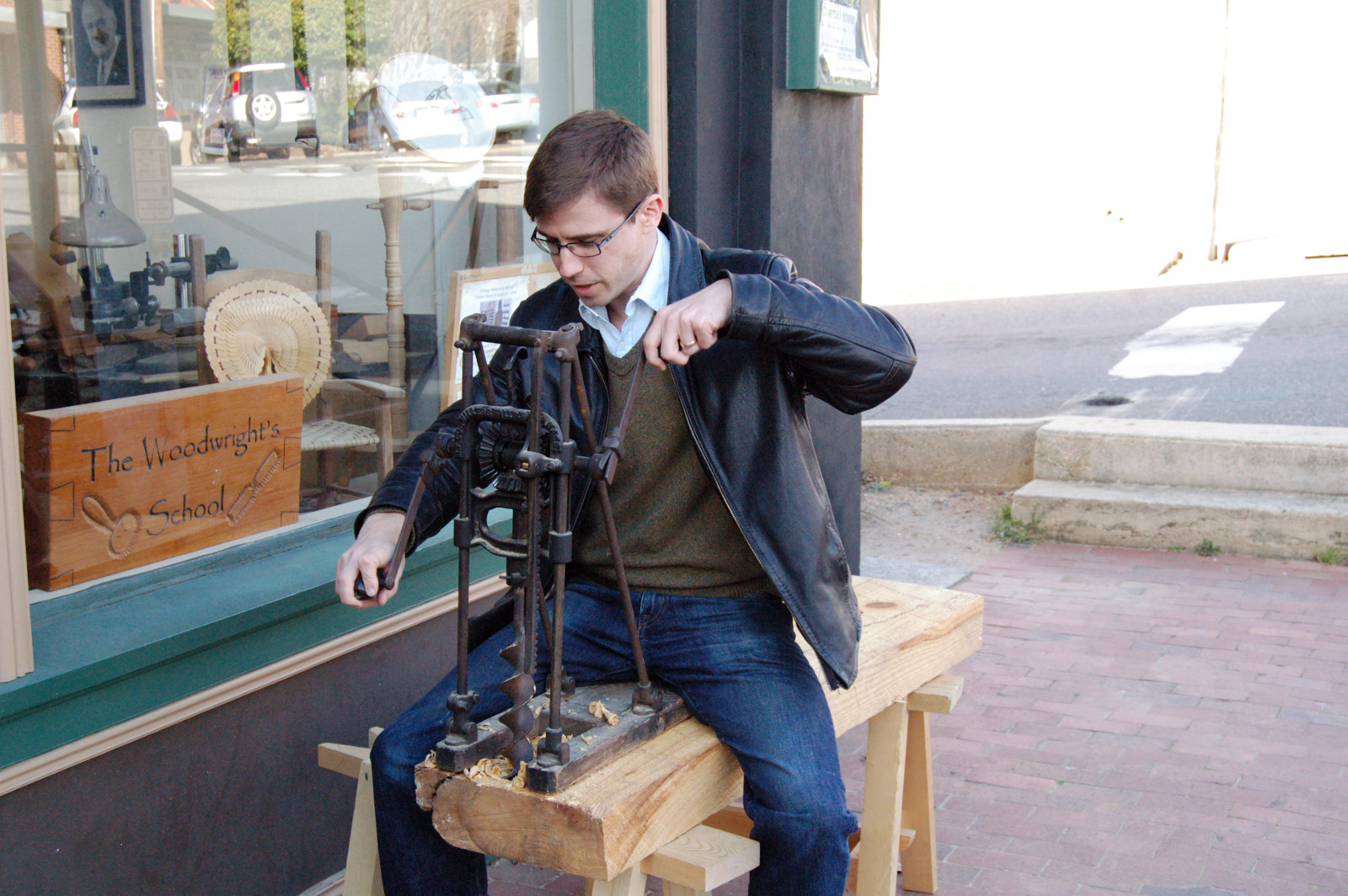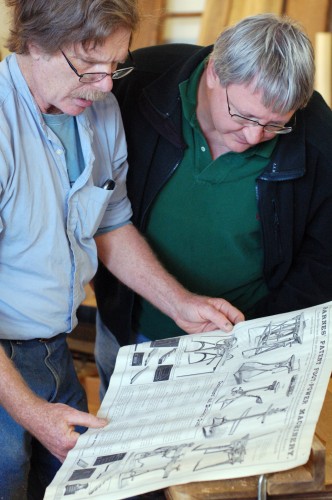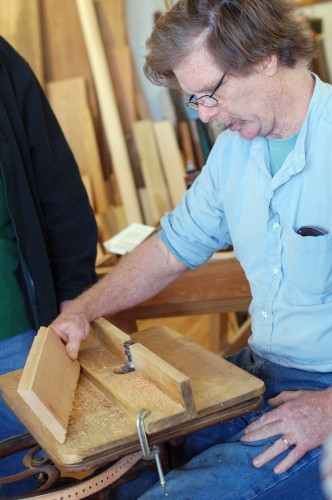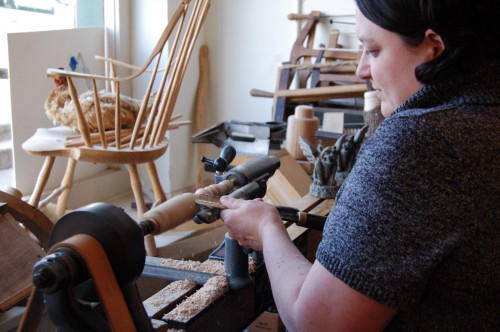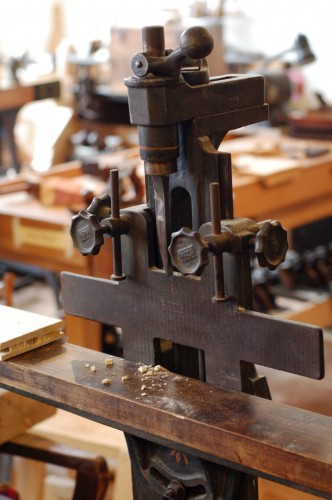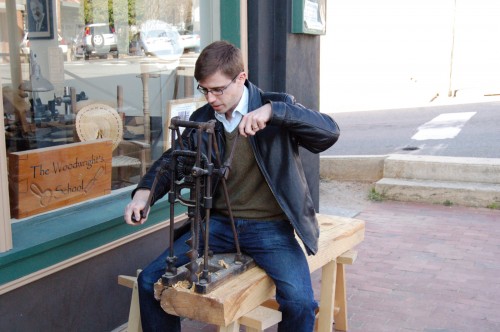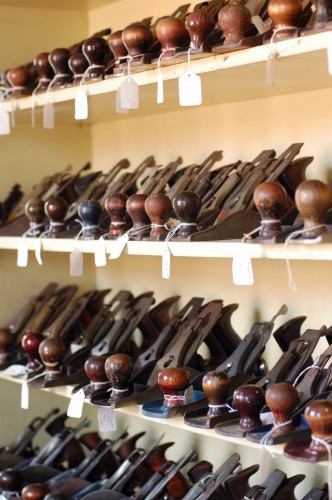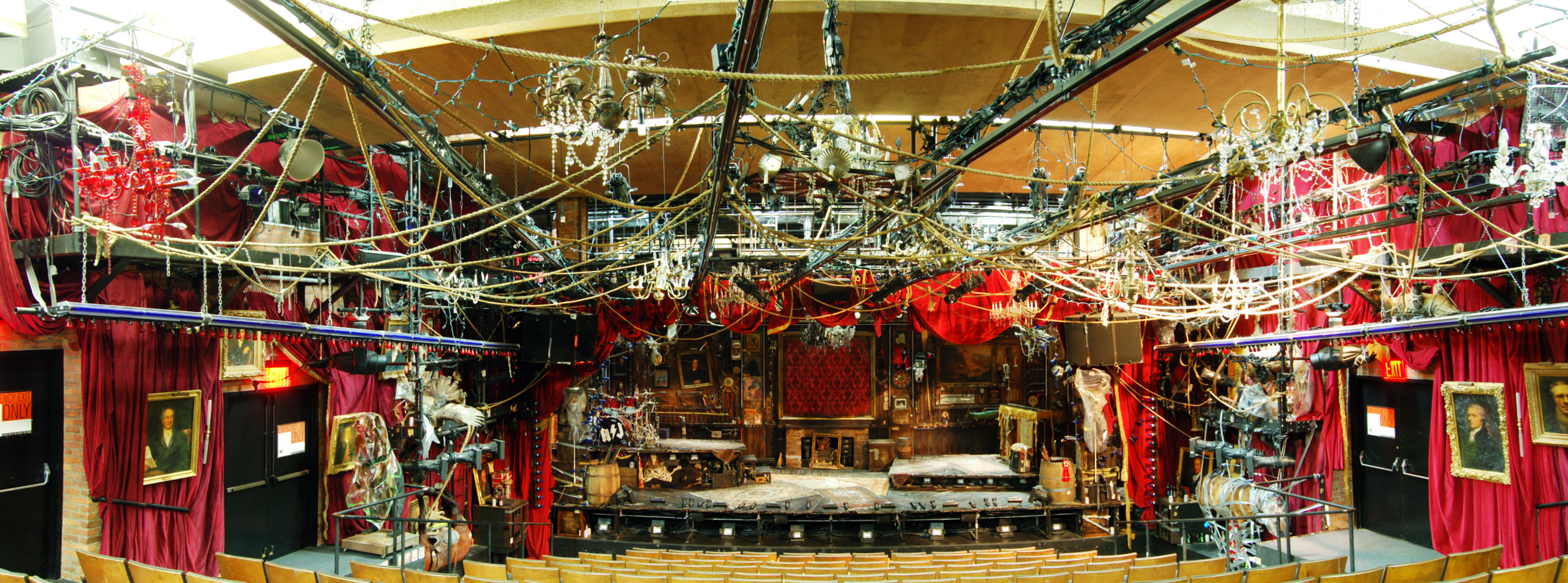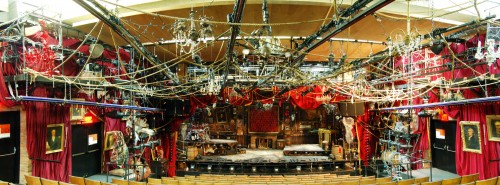Updated 12/14/10 – See Below
Last Wednesday, I attended a “Going Green in Theatrical Design: Set & Props” Workshop, organized by the Broadway Green Alliance. As you may infer, the BGA is an initiative to spread information on more environmentally-friendly and less wasteful theatre practices. The workshop featured presentations by several people at Showman Fabricators, Donyale Werle, as well as representatives from companies making greener products for building sets and props, including theatre-specific ones like Rosco and Rose Brand. I absorbed a lot of material, much of which deserves their own articles, but I thought I would present a basic summary of most of my notes first.
The first half was on “reduce, reuse and recycle”. I missed the “reduce” part because my train broke down on the way there. Donyale led the presentation on “reuse”, talking not only about Bloody Bloody Andrew Jackson, but also on Broke-ology. Bloody Bloody is, of course, a cornucopia of reused elements; we gave them our two horses from Kicking a Dead Horse and parts of the body from Bacchae. That’s just a small percentage, as the show also includes a chandelier made of cat food cans, and assemblages of broken umbrellas and jujubees. Our props shop takes advantage of reused materials frequently; I built the furniture in Slave Shack with pieces of the floor from the Brothers/Sister Trilogy, and all of the rehearsal furniture for last summer’s Merchant of Venice was constructed from pieces of the floor from the previous summer’s Bacchae which I had set aside. Finally, of course, a prop stock room itself is a commitment to reuse.
New York City has a number of organizations which collect and redistribute building materials and theatrical sets, such as Build it Green (which I wrote about as well), Materials for the Arts, NYC WasteMatch and Film Biz Recycling. The BGA website has even more links. Like many other theatre professionals, this is the reason I began getting interested in all this; it’s absolutely heart-breaking when you see a show or exhibition close, and all of the set and props head straight to the dumpster, even if the show only lasted a few days. It’s even more heart-breaking if you’ve worked in low-to-no budget theatre where just a tenth of those materials would help you achieve your design.
Showman Fabricators discussed recycling next. I learned the difference between Post-Consumer Recycled content, Post-Industrial (or Pre-Consumer) Recycled content, and Total Recycled content. “Post-Consumer” is when a manufacturer takes items that have been used and reforms them into new material. This is where your bottles, cans and paper goes after you put them in those blue bins. “Post-Industrial” is when a manufacturer takes the scraps and waste from their own processes and turns them into other products. For instance, MDF is made from the sawdust at lumber mills. It’s the “we use all parts of the cow” approach. “Total Recycled” content is the combination of Post-Consumer and Post-Industrial content.
Next, he discussed the embodied energy of materials. Embodied energy is how much energy it took to create a material. Thus lumber has less embodied energy than plywood. To make lumber, you need to cut down a tree, drive it to a sawmill, cut it to size, dry it, and ship it to the store. For plywood, you need to do the same things as lumber, than also cut it into thin strips, glue them up, sandwich them together, cut veneer, and lay that over top. Thus, it takes more energy to create a sheet of plywood than it does to create an equal amount of lumber. We looked at a chart that showed some common theatrical materials and their embodied energy; I didn’t copy it down, but it looked very similar to this one I found online.
The embodied energy is not the only aspect you need to consider. For instance, steel and aluminum are both infinitely recyclable. Wood, on the other hand, is not. Maybe you can turn old wood into particle board, and after that, it might (though rarely) get ground down into some kind of composite material. So while it may have less embodied energy than steel, you have to keep creating more wood and growing more trees, where the same chunk of steel can be used over and over and over again.
The embodied energy chart can also be misleading because it goes by weight. Paint has a high embodied energy, but you only use a thin layer on the outermost portion of your set; a whole set can be painted with just a few cans. You use far more steel and wood by weight to construct your set. You should also remember that different materials have differing strength-to-weight ratios. Aluminum has a higher embodied energy than steel, but a structure constructed out of aluminum would weigh far less than one out of steel while being just as strong. Thus, an aluminum structure could potentially use less embodied energy in its materials. It’s a lot of math on your part though.
They told us of a number of waste management companies in New York City (also found on the BGA website) that will take your set away, recycle and reuse as much as possible, and tell you how much was kept out of a landfill. The idea is that when a show closes, rather than calling for a dumpster, a truck shows up and you load everything in their. In many cases, they can reuse and recycle 80–90% of your garbage, and it can sometimes end up costing less than a dumpster. A green alternative that costs less and doesn’t add additional labor? That’s gold!
The most important lesson is to make it easy. If you place bins for recycling next to all your trash cans, than it’s just as easy for an employee to toss his or her recyclables into the correct receptacle. If, however, you make your employees walk out to the loading dock to throw away their off cuts of steel, then more often than not, they’ll toss them into the regular trash “to save time.”
The second portion of the evening was headed by manufacturers touting their wares. Rose Brand talked about their Repreve yarn polyester fabric, which is made of 100% recycled fabric. Chad Tiller of Rosco (a friend of this blog) talked about their Iddings deep color (soy-based paints) and Roscoleum flooring (made from cork).
The other manufacturers had a whole range of green products typically used in more architectural settings: agri-fiber boards such as Kerei Board, NAUF (no added urea formaldehyde) MDF, Dakota Burl, Wheat Board, Paper Stone (recycled paper thermoset with a phenolic resin) and American Clay, to name a few. These are all interesting products, but for theatrical use, they still remain out of the price-range; a sheet of bamboo plywood costs about $200 as opposed to a comparably-sized sheet of construction ply for around $48. The exception is NAUF MDF, which is becoming more and more commonplace.
Finally, the scenic charge at Showman Fabricators had some closing words of wisdom. She pointed out that it is hard to switch products when time, money, and your reputation are on the line. You need to be able to depend on the materials you use, and you can’t just switch to a new “green” material in the middle of a project. You need to be constantly sourcing, requesting samples and testing new products on a small-scale and in between projects to find the least damaging solutions. One way to do so is to be open and share your solutions and experiments with everyone: your employees, your employees, and other shops. Being green is not proprietary. If you find a great new alternative to some product, tell other shops. It shows you are open to sharing, and if they find an alternative to another product, or a new way of organizing their shop for better “greenliness”, they will share that with you. Read my article “On Sharing and Secret Knowledge” to learn more about this philosophy.
Update – 12/14/10
Bob Usdin of Showman Fabricators, one of the presenters, emailed me and shared what I had missed from the beginning of the workshop:
The only things I would add are from the beginning (which I know you were delayed for):
- In reality you can never be truly green. Instead, we are making efforts to be greener.
- The single most useful thing you can do is REDUCE, particularly by optimizing your designs and engineering. If you can do the same scene with less scenery or build the same platform with less structure and still achieve the same effect (and safety), then you are being greener regardless of what materials you are using. I feel that the first “R†is often overlooked.
- The Natural Resource Defense Council (NRDC) greening advisor is a great resource for getting green tips on a host of subjects. They are also a major supporter of the BGA and its activities and knowledge base.
- In trying to be greener, it’s important to go beyond just the materials and techniques that go into a show. Looking at the facility and operations and how green those are can be as much of a contributing factor to greening the production. Energy consumption, renewable energy sources, water usage, location and connection to the community, materials, paper consumption, indoor environmental quality, and vehicles can all be a major part in greening the operations.

